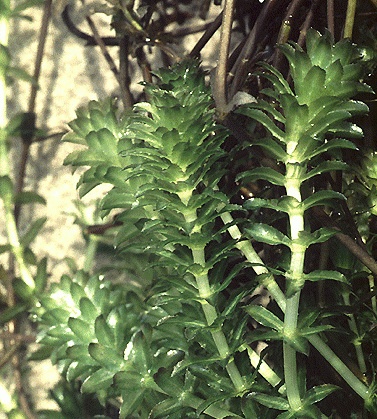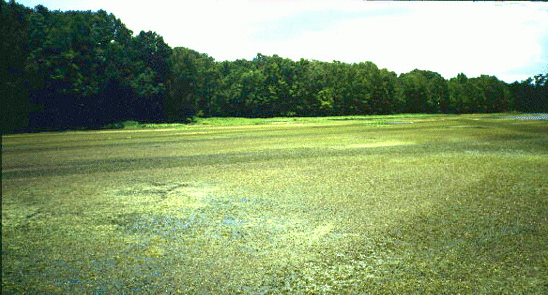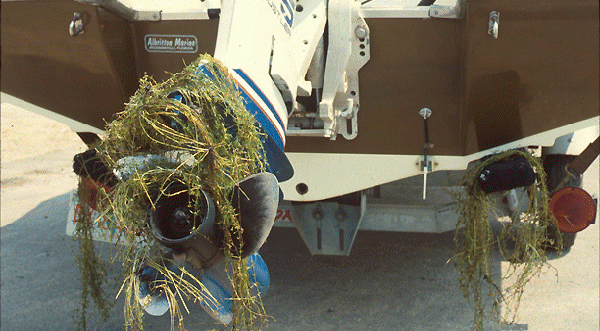
Hydrilla (Hydrilla verticillata) is considered one of the worst aquatic weeds in the United States. Native to parts of Asia, Africa, and Australia, it was first introduced to Florida in the 1950s through the aquarium trade. By the 1970s, the plant had invaded every major drainage basin in Florida. Currently, hydrilla has become established from Florida to Connecticut and west to California and Washington, with the most severe occurrences being found in the Gulf and South Atlantic States. See the current distribution of hydrilla in the United States.
Hydrilla has been found in over 30 US states.
The plant is a submerged, rooted perennial with long stems (up to 30 feet in length) that branch at the surface and form dense mats. Small white flowers grow above the water line on stalks. The stems are covered in small, pointed, often serrate (“saw-toothed edge”) leaves arranged in 3-10 whorls, with five leaves per whorl the most common. The leaves are bright green and measure 5/8 inches long. Leaf midribs are often reddish with one or more sharp spines. The most reliable way to identify hydrilla is to look for small, white to yellowish, potato-like tubers attached to the roots.
Hydrilla is named after Hydra, the 9‐headed serpent of Greek mythology, because it can grow an entirely new plant from a tiny stem fragment.
Hydrilla can reproduce in four different ways; fragmentation, tubers, turions, and seed:
Hydrilla can be found infesting freshwater lakes, ponds, rivers, impoundments and canals. It is extremely hardy and can grow in many conditions, including low light levels and poor nutrient areas.
Hydrilla is also known as water thyme, Florida elodea, Wasserquirl and Indian star-vine.

Hydrilla grows aggressively, up to a foot a day, and forms dense mats of vegetation that crowd out other plants. The dense mats often cause stagnant water conditions which provide breeding grounds for mosquitoes and provide poor habitat for diverse fish and other wildlife populations. Anglers may find a decrease in the size and quantity of fish in waterbodies where hydrilla is present. Extensive stands of hydrilla also obstruct boating, water-skiing, swimming, and other water-related activities.
The dense mats formed by hydrilla may slow the movement of water, disrupting the water supply, impeding drainage and irrigation. This results in significant economic losses to water treatment, power generation, and industrial facilities. The plant can also reduce the value of real estate that depends upon attractive waterways. Hydrilla is difficult to control and can cost as much as $1,000 per acre to manage; many states are spending millions of dollar per year to control this aquatic weed.

Hydrilla was first brought to the United States intentionally to sell as an aquarium plant. Today it is spread primarily by human activities. Although it is listed as a Federal noxious weed, hydrilla is often found hitchhiking in shipments of aquatic plants used in water gardens and may be sold by aquarium supply dealers or over the internet. Accidental spread is also commonly achieved by the hitchhiking of small hydrilla fragments on water vehicles including boats, bait buckets, draglines, motors and trailers to new water systems.
It only takes a one-inch fragment of Hydrilla to begin an infestation.
To prevent further spread, make sure that you follow good invasive species prevention practices when moving your watercraft or other recreation gear from one body of water to another. To minimize the potential spread of this aquatic weed, follow these simple steps.